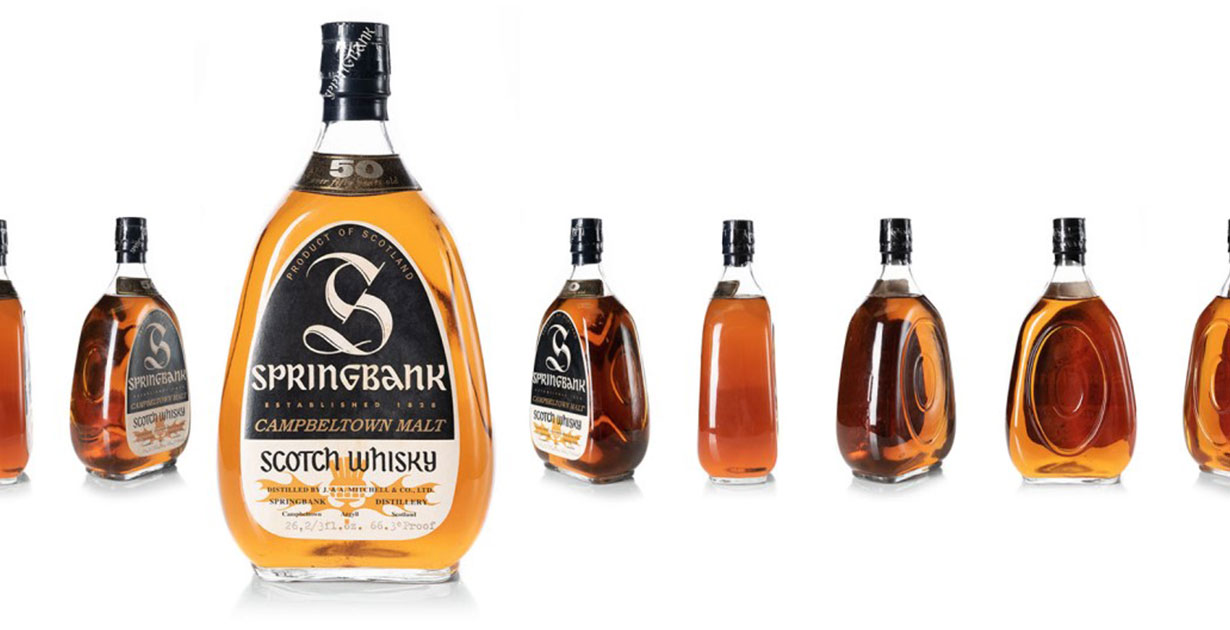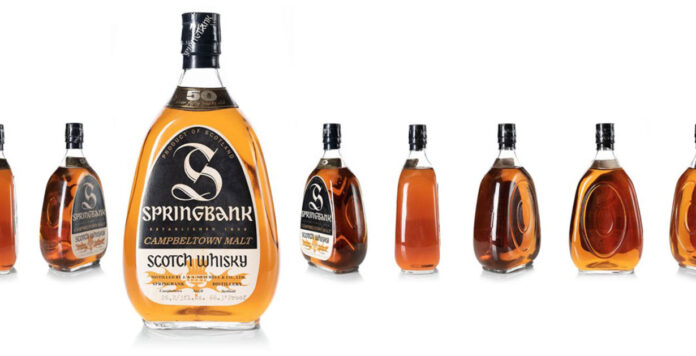

One of Scotland’s rarest whiskies sits at the center of a peculiar market puzzle. The Springbank 1919 50-year-old, distilled during Campbeltown’s golden age, exists in two forms – with dramatically different price tags.
The original 1970 bottling, in Springbank’s classic pear-shaped bottle, is available for £32,500 at Hedonism Wines in London. Its twin, containing identical whisky but rebottled in the 1980s with a wooden presentation box, commands £120,000 at auction.
This extraordinary price gap for the same pre-Prohibition spirit raises questions about what collectors truly value in rare whisky – the liquid, or the packaging.
The Tale of Two Bottles
In 1970, Springbank Distillery bottled one of Scotland’s most remarkable whiskies – a 50-year-old spirit distilled in 1919. The first release came in their distinctive pear-shaped bottle, standing at 66.3 proof (37.8% ABV), with a modest label matching their standard range.
A decade later, Springbank rebottled some of this precious liquid. Just 24 numbered bottles were created, each housed in a wooden box with a redesigned label highlighting its rarity. The whisky inside remained identical.
Today, these two versions tell a fascinating story of perception and value. The original bottling represents a piece of whisky history in its purest form, while its rebottled twin – one of just 24 numbered bottles – continues to set records, and has sold for £266,200 at Sotheby’s auction.
The dramatic price difference appears purely aesthetic – same whisky, different packaging, vastly different market value.
A Century-Old Spirit
When Springbank laid down this whisky in December 1919, Campbeltown was Scotland’s whisky capital. Known as ‘Whisky City’, its 21 distilleries produced some of the world’s most sought-after spirits. Then everything changed.
The arrival of Prohibition in America triggered a chain reaction. Many Campbeltown distilleries rushed to meet soaring black-market demand, cutting corners and damaging the region’s reputation. By 1934, only Springbank and Glen Scotia remained operational.
What makes the 1919 bottling extraordinary is its survival through this turbulent period. While other distilleries were disposing of stock or closing their doors, this cask quietly matured for half a century. It’s one of the few pre-Prohibition Campbeltown whiskies still in existence.
Even more remarkably, Springbank chose to bottle it as a single malt in 1970 – an era when blended whisky dominated the market. This decision preserved a unique snapshot of Campbeltown’s golden age, capturing a style of whisky making that had largely disappeared.
Collector’s Corner
While both versions of the 1919 Springbank are exceptionally rare, their market values tell different stories. The original release, though arguably more historically significant, trades at a fraction of its rebottled counterpart.
This disparity offers an intriguing opportunity for serious collectors. Original pear-shaped bottles represent significant value when compared to other pre-1920 whiskies..
Collectors typically focus on the 24 numbered reissues, overlooking these original bottles. Yet both contain identical whisky from one of Scotland’s most prestigious distilleries, making the price difference even more remarkable.
For collectors seeking genuine pre-Prohibition whisky, the original 1919 Springbank represents a unique opportunity. While its rebottled sibling commands headline-grabbing prices, these first-release bottles offer the same historical significance at a quarter of the cost. In today’s rapidly evolving whisky market, such disparities rarely last long.

